Two city extensions East and West of Cairo are each expected to accommodate 2.5 million people within the next 10 years.
Cairo feels and looks like an apocalypse zone. When I last traveled through the city, small children huddled in dirty doorways, a bloody-faced man groveled on the ground looking for money, and trash piled up at the foot of every half-built red brick building. Though the desert and Luxor still maintain some of Egypt’s magical allure, it seems that Cairo’s glory days are over. But a joint SODIC and Solidere International venture that is well underway may restore some sense of sanity to the areas east and west of one of Africa’s most densely-populated cities.
Two new mixed-used developments called Eastown and Westown are designed to provide commercial, government, and retail services to the residents of Kattameya and 6th of October. Initially conceived to absorb Cairo’s overflow, and to develop a more pedestrian-friendly model that will ease traffic congestion and pollution, these new metropolitan centers will both service 2.5 million people within 10 years.
According to Al-Masry Al-Youm, Westown will occupy 1.2 million square meters of land along the Cairo-Alexandria road. Eastown will be developed around Road 90 near the new American University campus. SODIC, Egypt’s 3rd largest property developer, expects each project to cost at least LE25 billion (or $4.20 billion).
Moving away from the former development model that separated residential and commercial areas, forcing residents to own cars or use public transportation in order to maintain their daily lives, Eastown and Westown will knit all services into one urban fabric. Although they are not supposed to house a lot of people, the cities will enable people to pay their utility bills and shop without facing the insane traffic.
Many different architects have been commissioned to work on this massive project, and each has a unique approach. But attention has been paid to sustainability. In particular, many designers are considering glazing to reduce solar gain, responsible building materials, good insulation to improve energy efficiency, and passive design that will minimize energy dependency in the first place.
Post revolution, the cash flow for this project has diminished, but SODIC does not appear to be terribly worried that major disruptions will occur to their progress. I certainly hope not, because the last thing that Cairo or Egypt needs are more unfinished skeletons that restrict the country’s ability to imagine a more complete future.
More on Egypt, Architecture, and Urban Planning:
Egypt May Survive Climate Change Thanks to AUC Students
Hassan Fathy is the Middle East’s Father of Sustainable Architecture
Mekano Designs Renewable Energy Skyscraper for Cairo’s Garbage City

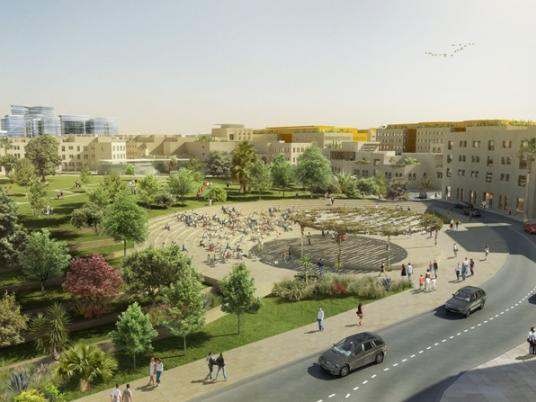
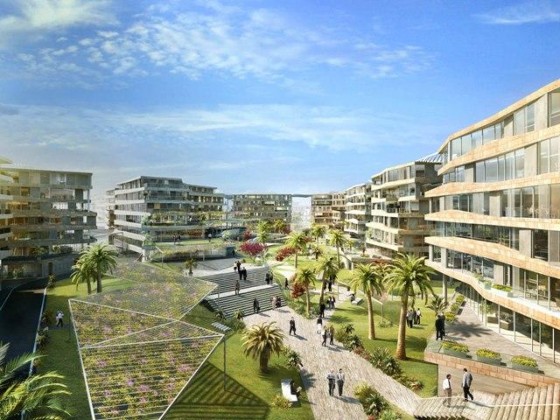
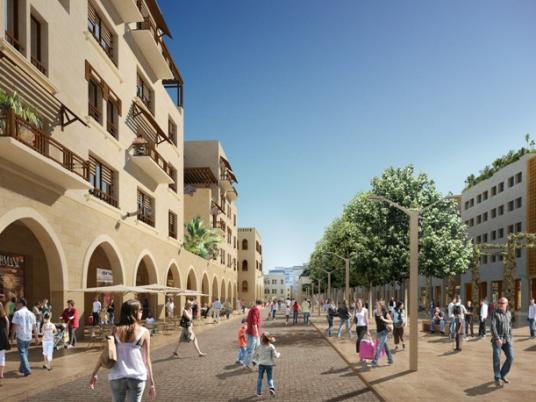
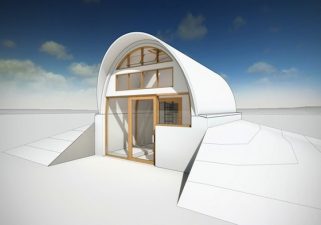
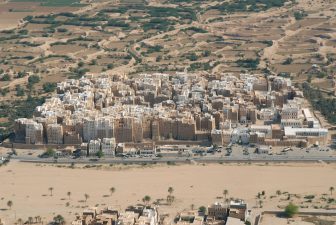
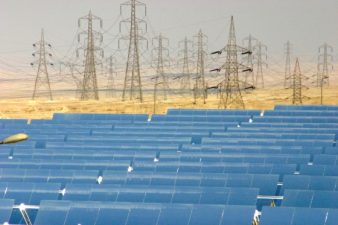
You’re not the first to say that Ira. Cairo may not be an abandoned apocalypse zone, but the city’s problems are insurmountable: huge solid waste issues, crumbling infrastructure, overwhelming poverty, miles and miles and miles of buildings outside the immediate city center (which most tourists don’t see) that are poorly constructed and lack proper facilities. Post-revolution, most Egyptians are not nearly as exuberant about their future as it may seem in the media. They are cautiously optimistic, but realistic about the challenges any new regime faces.
Tafline – maybe I have an overly romantic view of Cairo, but during my short stay last year (and a longer stay many years ago) I did not at all feel I was in “an apocalypse zone.” It was teeming with life at all hours of the day and night, with a type of “mellow chaos” prevailing in the traffic jams… And after the amazing events of Tahrir Square, I think it is too early to say that “Cairo’s glory days are over”…